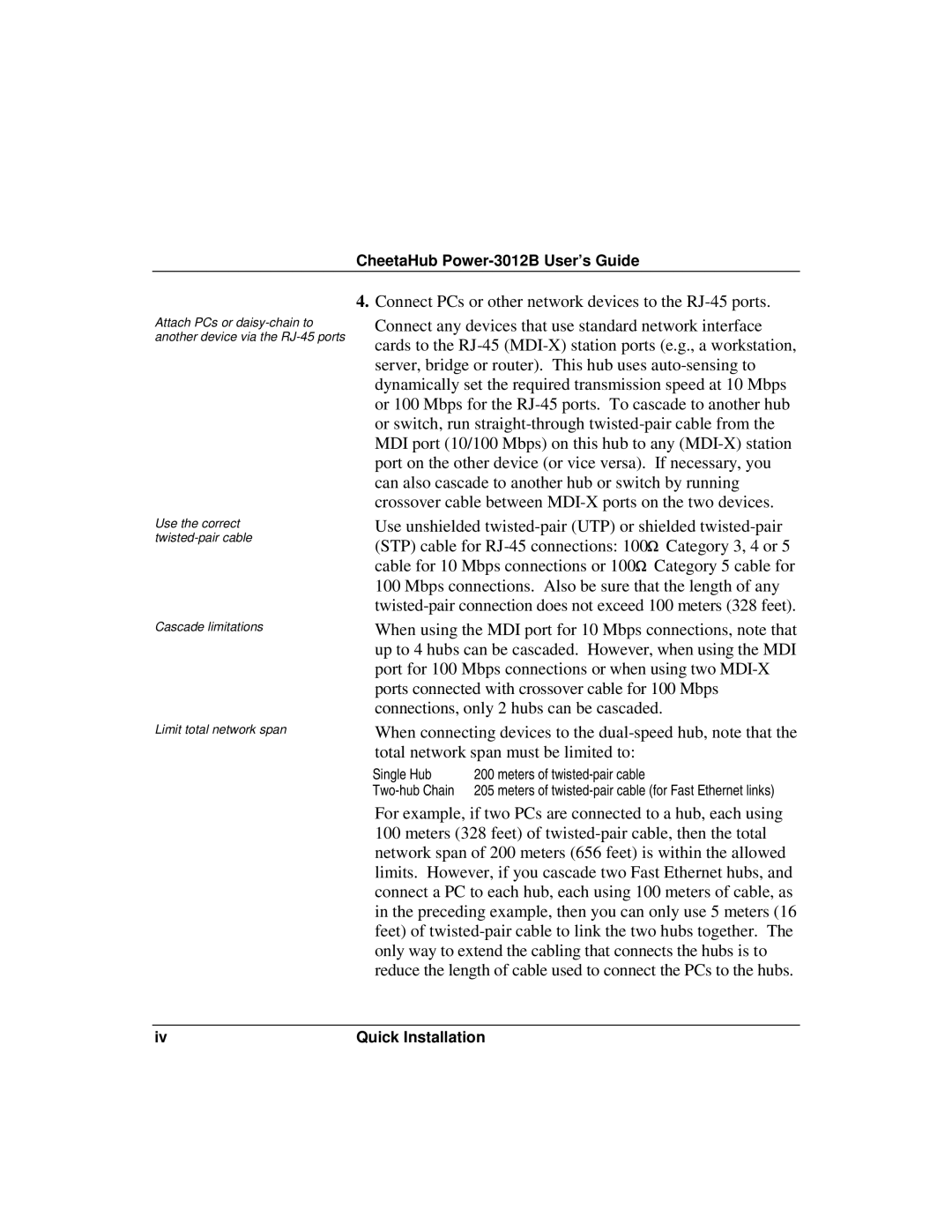4.Connect PCs or other network devices to the RJ-45 ports.
Connect any devices that use standard network interface cards to the RJ-45 (MDI-X) station ports (e.g., a workstation, server, bridge or router). This hub uses auto-sensing to dynamically set the required transmission speed at 10 Mbps or 100 Mbps for the RJ-45 ports. To cascade to another hub or switch, run straight-through twisted-pair cable from the MDI port (10/100 Mbps) on this hub to any (MDI-X) station port on the other device (or vice versa). If necessary, you can also cascade to another hub or switch by running crossover cable between MDI-X ports on the two devices.
Use unshielded twisted-pair (UTP) or shielded twisted-pair (STP) cable for RJ-45 connections: 100W Category 3, 4 or 5 cable for 10 Mbps connections or 100W Category 5 cable for 100 Mbps connections. Also be sure that the length of any twisted-pair connection does not exceed 100 meters (328 feet).
When using the MDI port for 10 Mbps connections, note that up to 4 hubs can be cascaded. However, when using the MDI port for 100 Mbps connections or when using two MDI-X ports connected with crossover cable for 100 Mbps connections, only 2 hubs can be cascaded.
When connecting devices to the dual-speed hub, note that the total network span must be limited to:
Single Hub | 200 meters of twisted-pair cable |
Two-hub Chain | 205 meters of twisted-pair cable (for Fast Ethernet links) |
For example, if two PCs are connected to a hub, each using 100 meters (328 feet) of twisted-pair cable, then the total network span of 200 meters (656 feet) is within the allowed limits. However, if you cascade two Fast Ethernet hubs, and connect a PC to each hub, each using 100 meters of cable, as in the preceding example, then you can only use 5 meters (16 feet) of twisted-pair cable to link the two hubs together. The only way to extend the cabling that connects the hubs is to reduce the length of cable used to connect the PCs to the hubs.

